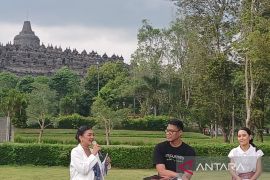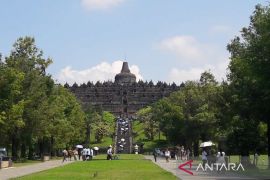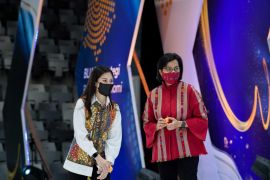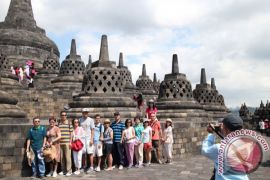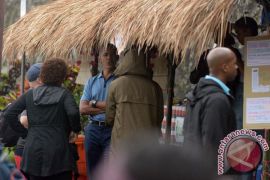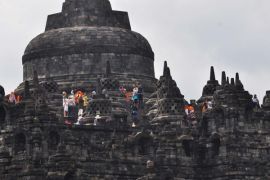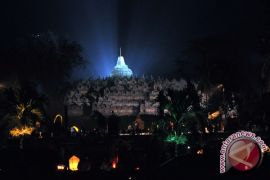Massive destruction was caused when the active volcano Mount Merapi erupted on 26 October 2010.
The Indonesian National Disaster Management Agency reported a month later that the eruption had killed 322, injured 776 and displaced 136,585 people who made a living from Mount Merapi`s fertile slopes.
Besides this catastrophic human toll, the volcano blanketed the surrounding areas in volcanic ash, posing a threat to ancient cultural icons such as the Borobudur Temple Compounds.
Indonesian Ministry of Culture and Tourism officials closed the complex, which is situated 25-km away from Mount Merapi, and began a clean-up operation of volcanic ash from the grounds of the Borobudur, Mendut and Pawon temples to prevent corrosion of their stonework from the hazardous dust.
Indonesian Ministry of Culture experts analysed the ash and found it to be slightly acidic (pH 5-to-7) and to contain hyaline (a glass-like substance) structures.
This corrosive ash can cause serious damage to the monument`s drainage system and more importantly, it is a very serious threat to the unique carved reliefs, Buddha statues within stupas on the terraces and the facades, and balustrades at the temple, for which the site is justly famous.
When diluted in water, the acid ash reacts with the stone and seriously accelerates the erosion of its surface. This potential and inevitable damage if not mitigated very soon constitutes a significant threat to the outstanding universal value of the three temples.
Therefore, the conservation problem at Borobudur needs to be urgently re-examined and the stone work urgently treated.
Indonesian authorities asked UNESCO for technical assistance at the disaster-affected areas and a programme titled "Emergency Operation for the Safeguarding of the Borobudur Temple Compounds from the Damage caused by the Mt. Merapi Eruption and Revitalization of the Local Community Livelihood in Cultural Industries and Heritage Tourism" was put into place.
The three-phase actions are: execution of an emergency cleaning operation with full participation of the local community, notably cleaning of the surface of the stone monuments and the drainage systems, related archaeological parks and surrounding natural resources; joint scientific damage assessment missions with the Indonesian government and UNESCO for the establishment of comprehensive remedial conservation measures and workshop for Natural Disaster Management at the cultural heritage sites in Indonesia; and activities for the local community with respect to livelihood and income generation via the tourism industries and cultural industries
The restoration process was fortunate to get the financial backing of the international community, including the private sector, to ameliorate physical conditions at the temple, in particular phase one and two actions, which witnessed a keen interest in preserving the Borobudur site.
Some funds have already been committed to these emergency actions, and identified preliminary operations are currently underway at the site using this financial allocation, which is essentially the process of removing surface coating from parts of the drainage systems and reliefs.
However, substantial financial resources are still needed to fully restore the Borobudur Temple Compounds, to rehabilitate the cultural tourism sector, and to enhance the livelihoods of affected local communities who are directly and indirectly dependent on the site for their livelihoods.
UNESCO and the `Friends of Borobudur`, a group of individuals with a keen interest in the long-term safeguarding of the Borobudur Temple Compounds, welcome further financial assistance from donors, the private sector and other concerned partners to safeguard the outstanding universal value of the Borobudur Temple Compounds World Heritage Site.
An online account at the UNESCO website has been set up for people who wish to donate and support the emergency intervention to safeguard the area for future generations.
Mr. Masanori Nagaoka, the program specialist for culture unit, UNESCO office in Jakarta.
(T. E002/O001)
Reporter: By Masan - (d)
Editor: Priyambodo RH
Copyright © ANTARA 2011

